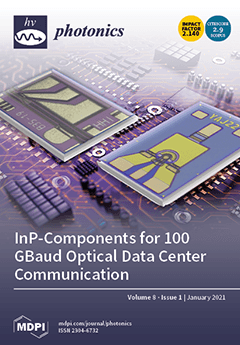Open AccessEditor’s ChoiceReview
Diagnosis of Glioma Molecular Markers by Terahertz Technologies
by
Olga Cherkasova, Yan Peng, Maria Konnikova, Yuri Kistenev, Chenjun Shi, Denis Vrazhnov, Oleg Shevelev, Evgeny Zavjalov, Sergei Kuznetsov and Alexander Shkurinov
Cited by 34 | Viewed by 7546
Abstract
This review considers glioma molecular markers in brain tissues and body fluids, shows the pathways of their formation, and describes traditional methods of analysis. The most important optical properties of glioma markers in the terahertz (THz) frequency range are also presented. New metamaterial-based
[...] Read more.
This review considers glioma molecular markers in brain tissues and body fluids, shows the pathways of their formation, and describes traditional methods of analysis. The most important optical properties of glioma markers in the terahertz (THz) frequency range are also presented. New metamaterial-based technologies for molecular marker detection at THz frequencies are discussed. A variety of machine learning methods, which allow the marker detection sensitivity and differentiation of healthy and tumor tissues to be improved with the aid of THz tools, are considered. The actual results on the application of THz techniques in the intraoperative diagnosis of brain gliomas are shown. THz technologies’ potential in molecular marker detection and defining the boundaries of the glioma’s tissue is discussed.
Full article
►▼
Show Figures





